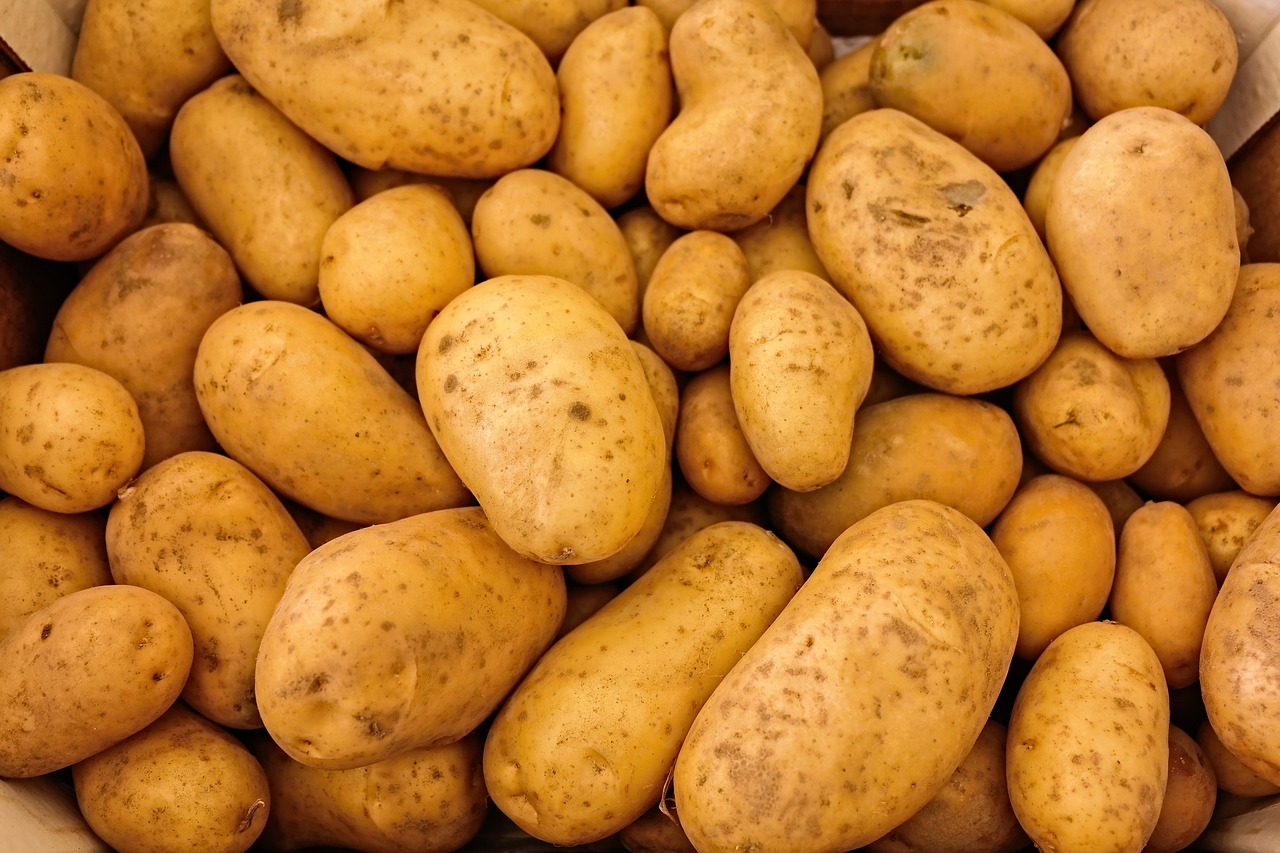If space is limited, or if you’re looking for a more manageable gardening experience, container gardening is the perfect solution. Harvesting potatoes in containers offers numerous benefits, from maximizing small spaces to providing easy access for planting and harvesting.
Harvesting Your Potatoes
The excitement of harvesting your potatoes is one of the best parts of growing them. Here’s how to know when it’s time to harvest:
Young Potatoes: If you desire small, new potatoes, begin harvesting about 10 weeks after planting; just gently dig around the plant with your hands to check for tubers.
Mature Potatoes: For mature potatoes, wait until the plants flower and then allow the foliage to die back. This usually occurs around 14 to 20 weeks. Once the leaves have turned yellow and died, it’s time to harvest.
Harvesting Method
Tip the container over or gently remove the soil with your hands or a gardening fork to access the potatoes. Be careful not to bruise them during the process.
Storing Your Harvest
Once harvested, allow your potatoes to cure in a cool, dark area for about a week. This helps to toughen their skin and prolong shelf life. Store them in a cool, dark location to keep them fresh. Avoid direct sunlight and moisture, which can lead to sprouting or rot.
Why Grow Potatoes in Containers?
1. Space Efficiency
Container gardening allows you to grow potatoes even in small spaces like patios, balconies, or small backyards. You can use various types of containers—such as pots, buckets, or specialized grow bags—to suit your available space.
2. Improved Drainage
Containers often provide better drainage than traditional garden beds. This is particularly important for potatoes, which are prone to rot in overly moist soil. Well-drained soil promotes healthy root development, leading to a more plentiful harvest.
3. Pest Management
Growing potatoes in containers can help minimize pest issues. It’s easier to monitor container plants for pests and diseases, and barriers like floating row covers can be added easily to protect your crop.
4. Accessibility
Container gardening is an excellent choice for those with limited mobility. Using raised containers means you won’t need to bend down as far to plant, maintain, and harvest your crop.
Choosing the Right Container
When selecting a container for growing potatoes, consider the following:
Size: Aim for a container that is at least 5 to 10 gallons in capacity to allow for adequate root growth. A large bucket, a tote, or specialized potato grow bags can work well.
Material: The container material can vary—from plastic to fabric to wood—so pick what suits your aesthetic and will withstand the elements. Ensure it has proper drainage holes to prevent waterlogging.
Weight: When filled with soil and potatoes, containers can become quite heavy. Make sure the location can support the weight and that you can move the container if necessary.
Preparing Your Soil
Potatoes prefer loose, well-draining soil, rich in organic matter. You can create an ideal mix using:
Potting soil: Use quality potting soil that retains moisture but drains well.
Compost: Adding compost boosts the nutrient content and improves soil texture.
Perlite or vermiculite: Incorporating perlite or vermiculite will further enhance soil drainage and aeration.
Planting Your Potatoes
1. Seed Potatoes
Start with certified seed potatoes instead of grocery store potatoes to avoid disease. Choose varieties based on your taste preference and growing season length.
2. Chitting
Before planting, it’s beneficial to “chit” your seed potatoes. This involves placing them in a light, cool area for about two weeks until they start to sprout. This process encourages faster growth once planted.
3. Planting
Fill the container with 4 to 6 inches of soil and then place your seed potatoes on top, spaced about 6 inches apart. Cover them with another few inches of soil. You can keep adding soil as the plants grow, a technique known as “hilling,” which encourages more tuber formation.
Caring for Your Container Potatoes
Watering
Maintain consistent moisture in your containers, as potatoes require regular watering, especially during dry spells. Avoid waterlogging, which can cause rot; the soil should be damp but not saturated.
Fertilizing
Feed your potatoes with a balanced fertilizer to encourage healthy growth. You can start fertilizing a few weeks after planting and continue every few weeks.
Sunlight
Potatoes thrive in full sunlight, so place your container in a location that receives at least 6-8 hours of sunlight daily for optimal growth.





